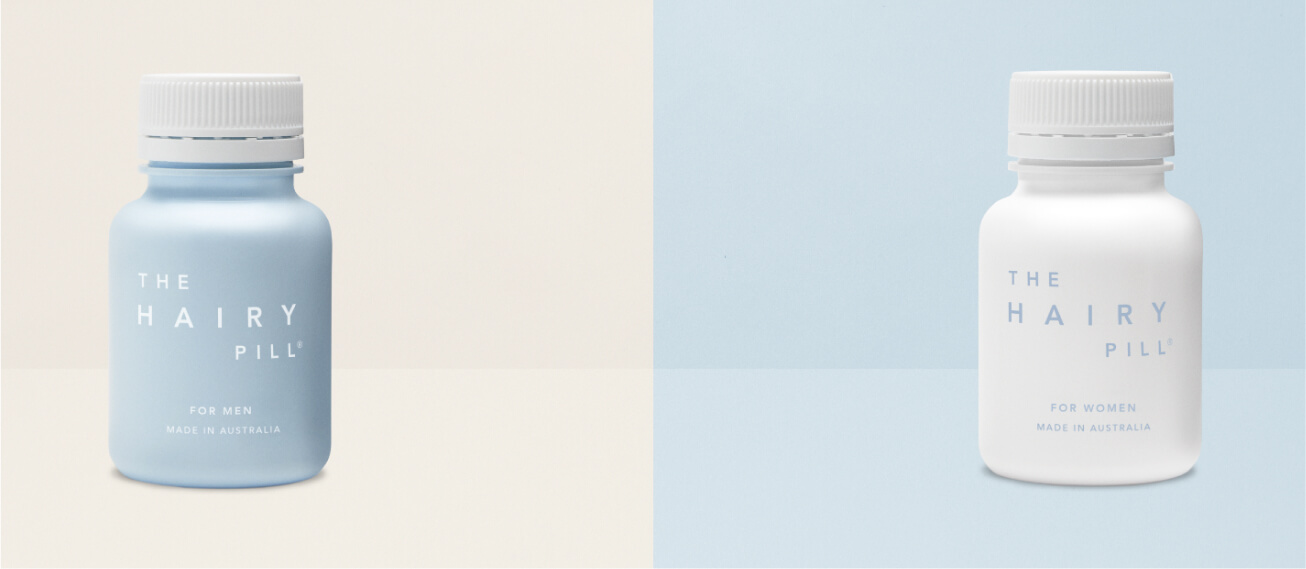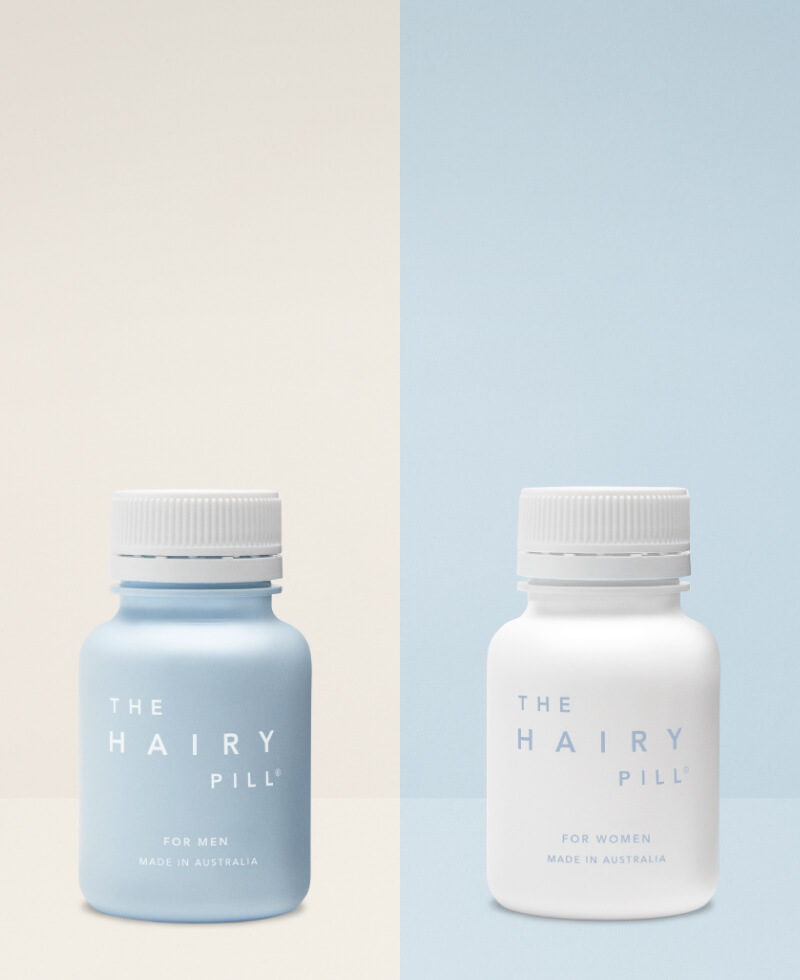We’re all waiting for the moment researchers discover a breakthrough cure for hair loss. Imagine that. A lifetime with a head full of hair, no action required.
But for now, that moment still seems a long way off. There is currently no cure for genetic hair loss or baldness.
Let’s explore why a cure eludes us, what the latest research says, and what men’s and women’s hair loss treatments are available right now.
Why Is There No Cure for Hair Loss?
Hair loss is complex and can be influenced by a range of factors. You’ve got genetics, hormones, age, general health, and lifestyle factors to contend with.
That makes hair loss — and the reasons behind it — highly personal. The factors that give one person hair loss can be completely different to what makes another bald.
It means finding a cure is a mammoth undertaking.
Discover if The Hairy Pill® is right for you.
Take our short hair health quiz and we will work out if The Hairy Pill® can help you and your hair.
Take the quizHow Long Until a Cure for Baldness Is Found?
The fact that there hasn’t been a new drug for baldness in 20 years speaks volumes about how difficult it is to treat hair loss. But that’s not for lack of trying.
There have been a few breakthroughs in hair growth research over the past few years. But even with these promising developments, it’s unlikely we’ll see a permanent cure for hair loss or baldness any time soon.
Some good news:
Game-changing treatments could be just around the corner.
Several biotech companies are in the late stages of clinical trials for new products. It sounds promising but remember — it takes years of clinical trials to fully understand the long-term effectiveness and side effects of a new treatment.
That means any potential breakthrough is still years away from entering the market.
Perhaps the most promising research area is stem cell therapy. Stem cells can transform into different cells, or divide into more stem cells, to help the body repair itself after injury.
Hair follicles contain stem cells — but even when a hair follicle dies, the stem cells do not. That means that if you can send a signal to regenerate the stem cells, they may be able to turn into new hair follicles.
But how do we stimulate these stem cells?
MicroRNA therapy
One way we could stimulate stem cells is by boosting the production of a tiny ribonucleic acid (RNA) called miR-205.
The early stages of research in mice found that this microRNA softened and stimulated the stem cells in hair follicles. In just 10 days, it increased hair growth.
The method is yet to be tested on humans — results in mice studies don’t always translate into human trials.
Osteopontin therapy
Another treatment involves a molecule that is particularly active in hairy moles: osteopontin.
Tests have found that osteopontin can reawaken dormant hair follicles and improve hair growth. If we can replicate these results in clinical human trials, we may have a new hair loss treatment in our sights.
Osteopontin would be into bald spots on the scalp, much like a microneedling procedure.
And if you’re worried that you’ll end up with those thick, wiry hairs that sprout from moles, rest assured. The properties of your hair are encoded within the follicle, which means the new strand will be just like the hair you had at 18.
Ready to start your hair growth journey?
- Free express shipping
- Unlimited doctor consultations
- Simple once a day treatment
So There’s No Cure for Hair Loss Yet — But Can It Be Reversed?
There’s no cure for hair loss but that doesn’t mean you have to be resigned to your fate. Several effective hair loss treatments may slow down your hair loss or even reverse it.
The only medications approved for hair loss are finasteride and minoxidil — and for women, only the latter is available. Outside of these medications, cosmetic procedures are the most viable alternative.
Finasteride
Finasteride is the most popular treatment for men’s hair loss. The oral medication prevents your body from producing the hormone responsible for hair loss: dihydrotestosterone or DHT. Research generally shows that finasteride can help stop hair loss and stimulate regrowth.
Minoxidil
Commonly used as a topical or oral treatment, minoxidil stimulates blood circulation around the hair follicles, delivering much-needed oxygen and nutrients. It also shortens the resting phase and lengthens the growth phase of the hair growth cycle to help regrow hair.
Low-level laser therapy (LLLT)
Low-level laser therapy may help reduce inflammation and stimulate tissue regeneration and repair using red light waves. However, we still don’t know enough about the long-term effects of a standardised treatment regime.
Platelet-rich plasma (PRP)
This cosmetic treatment involves injecting a concentration of platelets into the scalp over a series of treatments. It is aimed at increasing blood supply and improving the health of the hair follicles.
Hair transplantation
A hair transplant is a last resort treatment to restore hair to your head when your follicles may be damaged beyond repair. This costly and sometimes painful cosmetic procedure involves grafting skin containing healthy hair follicles onto the bald spots on the scalp.
Get Your Prescription Hair Loss Treatment: The Hairy Pill®
Unlike the other hair growth treatments we’ve listed here, The Hairy Pill® is made specifically for you after a doctor has assessed your needs.
The personalised blend contains active ingredients, vitamins, essential elements, and amino acids that help address the root cause of your hair loss to stop hair loss and stimulate regrowth.
The treatment is patented by world-renowned dermatologist Professor Rodney Sinclair following successful clinical trials and has proven results.
The best bit?
No outpatient clinic or trips to the pharmacy. The Hairy Pill® is accessible through a simple process. Just fill out our online form, get home delivery, and have ongoing doctor check-ins via phone or online. Get started.















